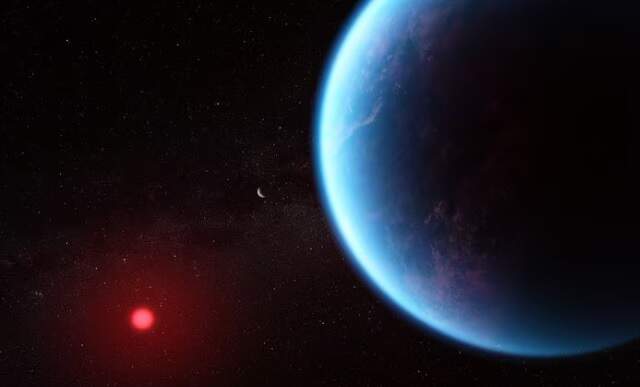
The exoplanet K2-18 b orbits the dwarf star K2-18 in the habitable zone and is 110 light-years from Earth. (Image: NASA/Disclosure)
Astronomers from the University of Cambridge in the United Kingdom have discovered possible signs of dimethyl sulfide (DMS) on a planet eight times larger than Earth and located outside the solar system (an exoplanet). This molecule is a sign of biological activity, i.e. life.
While this is ultimately encouraging news, it does answer the question, “Are we alone?” At the heart of exoplanet research, the signal is “weak” and, according to the researchers involved, more observations are needed to understand “potential atmospheric and internal processes involved.” The results were published in the scientific journal The Astrophysical Journal Letters and used data from the James Webb Space Telescope.
“Our ultimate goal is to identify life on a habitable exoplanet, which would change our understanding of our place in the universe. Our findings are a promising first step in This trend.
Lifetime subscription
According to researchers, dimethyl sulfide on Earth is a “by-product” of living organisms. It is emitted by phytoplankton in marine environments.
Although they stress that discovering the molecule requires a more comprehensive investigation, they are keen for more observations from NASA’s telescope. For this article, only two were used. “Our findings demonstrate the feasibility of detecting a biosignal molecule in the atmosphere of a sub-Neptune (exoplanet) in the habitable zone using the James Webb Space Telescope,” they highlight in the article.
NASA explains that in order for scientists to be able to read the atmosphere of these exoplanets, the telescope captures light from the stars. Gases in the atmosphere will block certain parts of the spectrum of this light. In other words, it’s almost like reading a barcode.
The exoplanet K2-18 b orbits the dwarf star K2-18 in the habitable zone, 110 light-years away from Earth, in the constellation Leo, and its mass is 8.6 times the mass of our planet. The first observations on it were made by the Hubble Space Telescope.
According to the University of Cambridge, the composition of its atmosphere with Hubble – which is much less “powerful” than Webb – has sparked controversy. Researchers had already proposed classifying it as a Hessian planet, which refers to those planets that have the potential to have a hydrogen-rich atmosphere and an oceanic surface covered in water. For scientists, these are the most promising worlds in the search for evidence of extraterrestrial life.
The abundance of methane and carbon dioxide, along with the scarcity of ammonia, captured by scientists supports the hypothesis that there may be an ocean of water beneath a hydrogen-rich atmosphere on this distant planet. In contrast to the DMS signature, these other molecules appeared more clearly in the analysis.
However, there are doubts about its ability to harbor life. NASA explains that the planet’s large size means its interior “may have a large, high-pressure ice layer,” like Neptune, but with a “thinner, hydrogen-rich atmosphere and an oceanic surface.” “The ocean is likely too hot to be habitable or liquid.”

“Coffee trailblazer. Social media ninja. Unapologetic web guru. Friendly music fan. Alcohol fanatic.”
